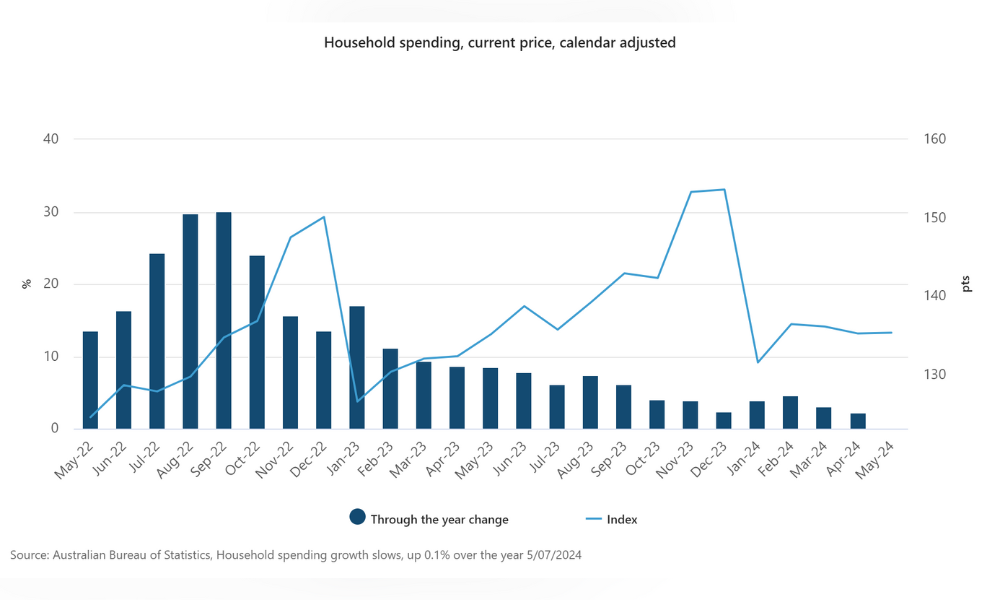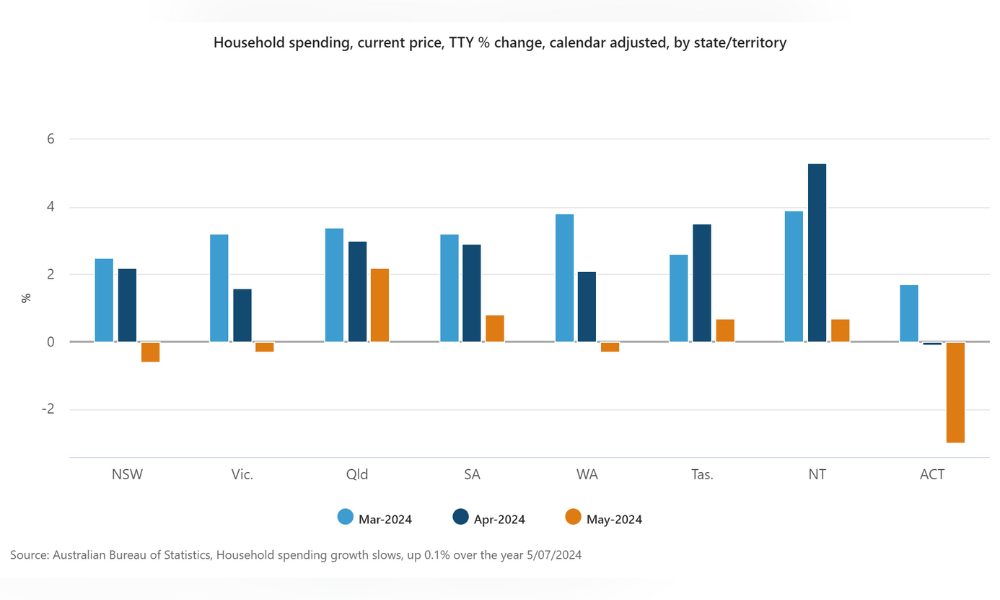Growth driven by an increase in spending on services

Household spending in Australia rose 0.1% over the past year, according to figures recently released by the Australian Bureau of Statistics (ABS).
Spending on services increased by 2.3%, driven by higher expenditures on health and other services, while spending on goods fell 2.5%, led by declines in clothing, footwear, and goods for recreation and culture.
Non-discretionary spending rose 1.8%, with significant contributions from health expenses and vehicle purchase and operation costs. Discretionary spending decreased by 1.9%, primarily due to reduced spending on clothing, footwear, and accommodation services.

The latest ABS figures also revealed household spending growth in four states and territories over the year, with the strongest rises recorded in Queensland (+2.2%), South Australia (+0.8%), and Northern Territory (+0.7%).
In Queensland, household spending saw significant increases in health (+10.1%), miscellaneous goods and services (+7.3%), and furnishings and household equipment (+3.8%).
South Australia also experienced notable spending growth in health (+12.4%), miscellaneous goods and services (+6.8%), and furnishings and household equipment (+4.6%).
In the Northern Territory, spending rose sharply in miscellaneous goods and services (+17.9%), and health (+11.1%), with considerable growth in transport (+3.7%) too. 
“Annual spending growth has slowed in recent months,” said Robert Ewing (pictured above), ABS head of business statistics. “The 0.1% rise in May follows a 2.2% increase in the 12 months to April.
“We continue to see higher growth in spending on non-discretionary goods and services compared to discretionary items. Non-discretionary spending rose 1.8%, as households spent more on health services and food compared to the same time last year.”
Want to be regularly updated with mortgage news and features? Get exclusive interviews, breaking news, and industry events in your inbox – subscribe to our FREE daily newsletter. You can also follow us on Facebook, X (formerly Twitter), and LinkedIn.



